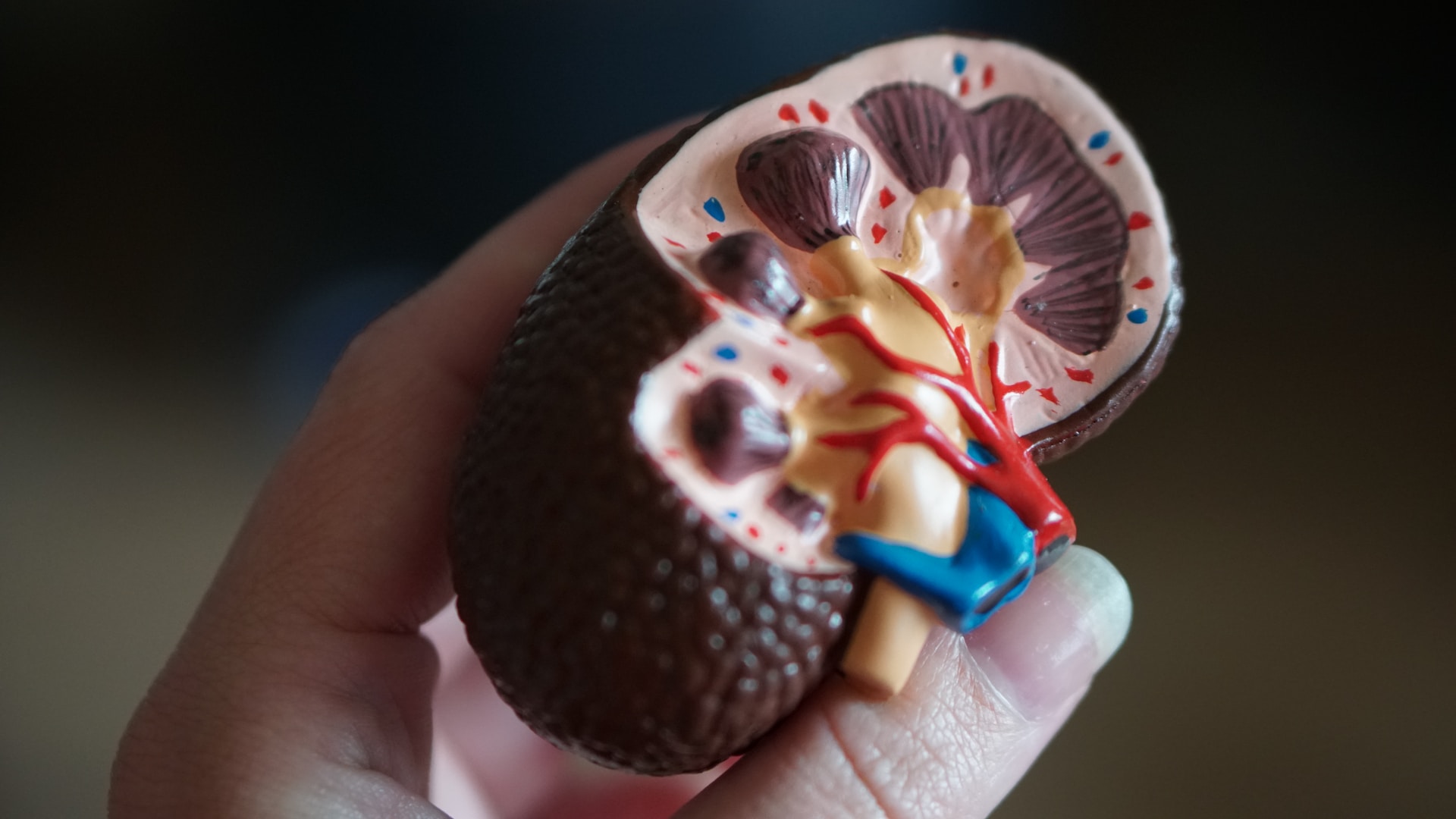
Urinary tract infections (UTIs) are common bacterial infections that can affect anyone, regardless of age or gender. These infections can occur in various parts of the urinary system, such as the bladder and kidneys, leading to a range of symptoms and durations. This article delves into the critical question of “How long does a UTI last?” and is a must-read for anyone who has ever grappled with this common ailment.
In this article, we will explore the different types of UTIs, their typical durations, the crucial role of antibiotic treatment, and the potential complications that may arise if UTIs are left untreated. Understanding the nuances of UTIs is essential for timely diagnosis and proper management to ensure a faster and safer recovery.
Key Takeaways
- UTIs are bacterial infections in the urinary system, affecting all ages and genders.
- They can be categorized into lower UTIs (affecting the bladder) and upper UTIs (affecting the kidneys).
- In females, uncomplicated lower UTIs (cystitis) typically last 3-7 days and improve with antibiotics in 1-2 days.
- Complicated UTIs, especially in males, can last longer and may lead to severe complications if left untreated.
- Timely antibiotic treatment shortens the duration and is crucial to prevent recurrence and complications.
- Untreated UTIs can lead to severe complications, including sepsis.
- Individual variability plays a role in how long an untreated UTI may last, but prompt medical attention is recommended for a quicker and safer recovery.
What are UTIs?
Urinary tract infections (UTIs) are bacterial infections that can occur anywhere in the urinary system, which includes the kidneys, bladder, ureters, and urethra. UTIs are one of the most common types of bacterial infections, affecting all ages and genders. They can range in severity from mild, uncomfortable symptoms to more serious, potentially life-threatening conditions. Here’s a brief overview of UTIs:
Lower UTI (Cystitis)
- Location: Lower UTIs, often referred to as cystitis, occur in the lower part of the urinary tract, primarily affecting the bladder.
- Symptoms: Common symptoms include a strong and persistent urge to urinate, a burning sensation during urination, cloudy or bloody urine, and frequent urination.
- Duration: Lower UTIs are typically less severe and tend to have a shorter duration. With antibiotic treatment, symptoms of an uncomplicated lower UTI can start improving within the first 1-2 days. A full course of antibiotics, typically lasting 3 to 7 days, is prescribed to ensure the complete eradication of the infection.
Upper UTI (Pyelonephritis)
- Location: Upper UTIs, also known as pyelonephritis, affect the upper part of the urinary tract, particularly the kidneys.
- Symptoms: Symptoms of pyelonephritis are often more severe and can include high fever, chills, back or flank pain, nausea, and vomiting, in addition to the lower UTI symptoms.
- Duration: Upper UTIs are typically more severe and may have a longer duration compared to lower UTIs. The duration of treatment can range from 7 to 14 days or more, depending on the severity of the infection. Symptoms may take longer to resolve, and a full course of antibiotics is crucial to ensure the complete elimination of the infection.
How Long Do UTIs Last in Females?
Duration of UTIs in Females: UTIs are more common in females than in males due to differences in anatomy. In females, the urethra is shorter and located closer to the anus, making it easier for bacteria to enter the urinary tract. Here’s a more detailed breakdown of the duration of UTIs in females:
- Uncomplicated UTIs (Cystitis):
- Uncomplicated UTIs that affect the bladder (cystitis) typically last around 3 to 7 days in females.
- Symptoms often include a strong and persistent urge to urinate, a burning sensation during urination, and frequent urination.
- With prompt antibiotic treatment, symptoms often start improving within the first 1-2 days. A full course of antibiotics, usually lasting 3 to 7 days, is prescribed to clear the infection completely.
- Complicated UTIs (Pyelonephritis or other factors):
- Complicated UTIs, which can involve the kidneys (pyelonephritis) or occur in the presence of underlying health issues, may have a longer duration.
- In such cases, treatment can last 7 to 14 days or more, and symptoms may persist until the infection is completely eradicated.
- The severity of symptoms and the duration can vary depending on the individual’s health and the extent of the infection.
How Long Does a UTI Last in Males?
Duration of UTIs in Males: Males are less prone to UTIs due to their anatomical differences. The longer male urethra and different urethral locations make it less common for bacteria to enter the urinary tract. Here’s a more detailed overview of the duration of UTIs in males:
- Uncomplicated UTIs in Males:
- Uncomplicated UTIs in males, though less common, may still last around 3 to 7 days when left untreated.
- Symptoms are similar to those in females and include a frequent urge to urinate, painful urination, and possibly cloudy or bloody urine.
- Complicated UTIs in Males:
- In males, UTIs are often considered complicated because their urinary tract structure can make infections more severe.
- The duration of UTIs in males can vary depending on the extent of the infection and the presence of complicating factors. Treatment may be necessary for 7 to 14 days or longer.
- Severe complications, such as the progression of the infection to the kidneys, can lead to longer treatment durations and may require hospitalization.
Duration of UTIs with a Treatment Plan
When UTIs are treated with antibiotics, the duration of the infection can be significantly shortened. Here are more specifics regarding the duration of UTIs with appropriate treatment:
- Uncomplicated UTIs (Cystitis):
- With antibiotic treatment, symptoms of an uncomplicated UTI in both males and females often start improving within the first 1-2 days.
- A full course of antibiotics is prescribed, usually lasting 3 to 7 days, to ensure the complete eradication of the infection.
- Compliance with the full antibiotic course is essential, even if symptoms improve earlier, to prevent recurrence or antibiotic resistance.
- Complicated UTIs (Pyelonephritis or other factors):
- In cases of complicated UTIs or those affecting the upper urinary tract (e.g., kidneys), treatment may require a longer duration.
- The duration of antibiotic treatment for complicated UTIs can range from 7 to 14 days or even more, depending on the severity of the infection and individual factors.
- The improvement in symptoms can take longer, but it is essential to complete the full course of antibiotics as prescribed by a healthcare provider.
Duration of UTIs Without Antibiotics
Without antibiotic treatment, the duration of a UTI can vary and largely depends on the body’s natural immune response and the severity of the infection:
- Spontaneous Resolution:
- In some cases, mild UTIs, especially uncomplicated cystitis in females, may resolve without antibiotic treatment.
- The body’s immune system may gradually clear the infection over time, and symptoms can improve over 1 to 2 weeks.
- Spontaneous resolution is less likely in males, and severe or complicated UTIs are less likely to clear on their own.
- Risk of Complications:
- UTIs left untreated or inadequately treated can lead to more severe complications, such as the infection spreading to the kidneys, known as pyelonephritis.
- The duration without treatment can extend beyond 1-2 weeks, and severe symptoms may persist or worsen.
- Complications can pose serious health risks, including sepsis, which is a medical emergency.
It’s crucial to emphasize that while UTIs can sometimes resolve without antibiotics, relying on spontaneous resolution carries risks, particularly in males and complicated cases. UTIs can lead to serious complications, and timely and appropriate antibiotic treatment is generally the recommended approach to ensure a quicker and more reliable recovery, as well as to prevent the progression of the infection to more severe stages. If you suspect a UTI, it’s essential to consult with a healthcare professional for proper diagnosis and treatment.
What Will Happen if a UTI is Left Untreated?
The duration of a urinary tract infection (UTI) when left untreated can vary depending on various factors, including the severity of the infection, the individual’s overall health, and the specific type of UTI. Here are more details on how long a UTI can last when not treated:
- Uncomplicated UTIs (Cystitis):
- In the case of uncomplicated UTIs that affect the bladder (cystitis), the duration without treatment can be longer than when treated with antibiotics.
- Symptoms, such as a frequent urge to urinate, painful urination, and cloudy or bloody urine, may persist for an extended period.
- The infection can linger for 1 to 2 weeks or even longer in some cases, as the body’s immune system attempts to combat the infection.
- Complicated UTIs (Pyelonephritis or other factors):
- Complicated UTIs, which involve the kidneys (pyelonephritis) or occur in individuals with underlying health conditions, are more severe and have the potential to last longer when left untreated.
- Without treatment, the duration of complicated UTIs can extend well beyond 2 weeks, and symptoms may become more severe over time.
- Untreated complicated UTIs can lead to serious complications, including the progression of the infection to sepsis, a life-threatening condition.
- Risk of Complications:
- UTIs left untreated or inadequately treated carry the risk of complications, which can significantly impact the duration of the infection.
- Complications may include spreading the infection to the kidneys, leading to more prolonged symptoms and potential organ damage.
- In some cases, untreated UTIs can result in recurrent infections, which can extend the overall duration of the problem.
- Individual Variability:
- The duration of an untreated UTI can also vary from person to person. Some individuals may have stronger immune responses to help the body clear the infection more effectively, while others may experience more prolonged symptoms.
UTIs Leading to Longer Recovery Time
The duration of a urinary tract infection (UTI) can vary significantly based on several factors, including the type and severity of the infection, the individual’s overall health, and whether or not the infection is appropriately treated. UTIs can lead to extended periods of illness when certain conditions and factors come into play.
- Untreated Infections: One of the primary causes of long durations of illness due to UTIs is when the infection goes untreated. Uncomplicated UTIs, such as cystitis, can linger for 1 to 2 weeks or even longer if not properly managed. Complicated UTIs, like pyelonephritis, which affects the kidneys, can extend well beyond 2 weeks when left untreated. Failure to seek prompt medical attention can lead to a prolonged illness.
- Complicated UTIs: UTIs that are classified as complicated, often due to underlying health issues or infections that involve the kidneys, tend to have longer durations. These complications can cause the infection to persist for an extended period, especially in cases where the immune system struggles to combat the bacteria effectively.
- Recurrent Infections: Some individuals may experience recurrent UTIs, which can lead to a cycle of illness and extended durations of symptoms. Each new infection may compound the overall duration of the problem. It’s crucial to identify and address the underlying factors contributing to recurrent infections, such as anatomical issues or incomplete treatment in previous episodes.
- Infection Spread: UTIs that are not treated in a timely manner or are inadequately treated can lead to the infection spreading to the kidneys, known as pyelonephritis. When the infection reaches this stage, the duration of illness can be significantly prolonged, and the symptoms may become more severe over time. In severe cases, this can even lead to sepsis, a life-threatening condition that requires immediate medical attention.
- Individual Variability: The duration of an untreated UTI can vary from person to person. Some individuals may have stronger immune responses, which can help the body clear the infection more effectively and lead to a shorter illness duration. However, others may experience more prolonged symptoms due to a weaker immune response or other underlying health conditions.
Final Thoughts
In conclusion, urinary tract infections are a prevalent health concern affecting individuals of all backgrounds. While uncomplicated UTIs often respond well to antibiotic treatment with relatively short durations, the consequences of leaving them untreated or inadequately managed can be severe and even life-threatening.
It is vital for individuals to be aware of the symptoms, seek prompt medical attention, and adhere to prescribed treatments to prevent complications and ensure a swift recovery. UTIs underscore the significance of addressing health issues proactively, underscoring the old adage that an ounce of prevention is worth a pound of cure.
Also Read: Last-Minute Solutions: How to Stop Your Period for a Night
FAQs
- Q: What is a urinary tract infection (UTI)?
- A: A UTI is a bacterial infection that can occur in any part of the urinary system, including the bladder, urethra, ureters, and kidneys.
- Q: What are the common symptoms of a UTI?
- A: Typical symptoms include a frequent urge to urinate, pain or burning during urination, cloudy or bloody urine, and discomfort in the lower abdomen.
- Q: How long do UTIs typically last?
- A: The duration of a UTI can vary, but uncomplicated lower UTIs (cystitis) often last 3-7 days, while complicated UTIs (involving the kidneys or other factors) may persist for 7-14 days or more.
- Q: Can UTIs go away on their own without treatment?
- A: In some cases, mild UTIs, especially in females, may resolve without antibiotic treatment. However, this is less likely in males and complicated cases.
- Q: What are the risks of leaving a UTI untreated?
- A: Untreated UTIs can lead to complications, such as the infection spreading to the kidneys (pyelonephritis), with the potential for severe symptoms and even life-threatening conditions like sepsis.
- Q: How is a UTI treated?
- A: UTIs are typically treated with antibiotics. The choice of antibiotic and the duration of treatment depend on the type and severity of the infection.
- Q: What can individuals do to prevent UTIs?
- A: To reduce the risk of UTIs, it’s essential to maintain good hygiene, stay hydrated, urinate before and after sexual activity, and wipe from front to back after using the restroom. Avoiding irritating feminine products and ensuring prompt treatment of any symptoms are also key preventive measures.
#UTI #UrinaryTractInfection #Health #InfectionPrevention #UTISymptoms #AntibioticTreatment #WomensHealth #MensHealth #HygieneMatters #Wellness #SepsisRisk #KidneyInfection #UTIComplications #MedicalAdvice #PreventativeCare #HealthyNBetter #UTIDuration
Note: The information provided in this article is for educational purposes only and should not be taken as medical advice. For personalized health recommendations, it is always advisable to consult with a healthcare professional before incorporating any changes to your daily health routine.







No comment yet, add your voice below!